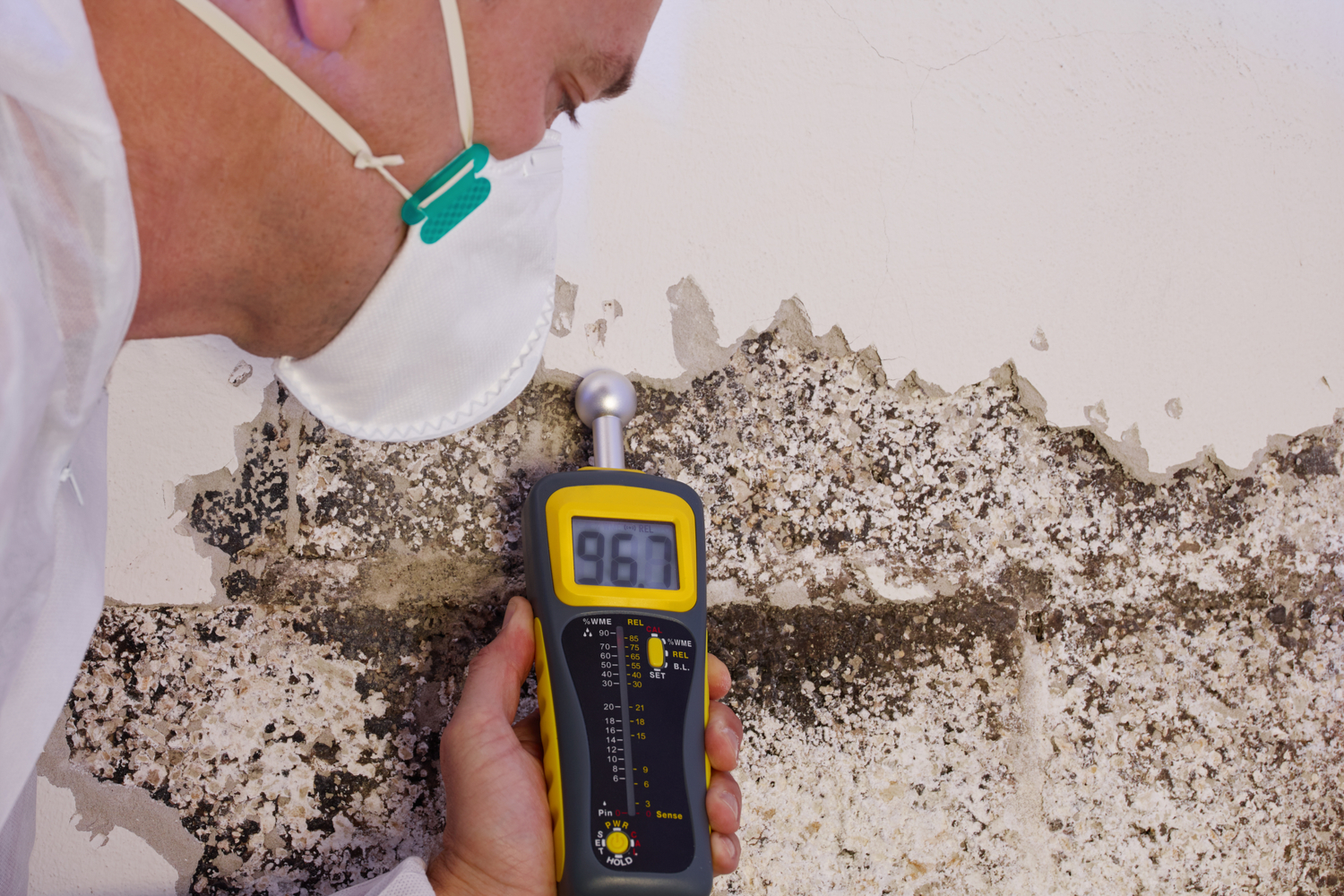When you start shopping for a new home, you don’t want to buy someone else’s problem, especially if it’s a mold problem. That’s why you have home inspections in the first place. You look in the corners of rooms, you look inside cabinets, and you can’t see any mold. So it’s probably not in the home, right? Mold is not always that easy to detect, especially just by looking. If the mold happens to be located inside walls, under floors, or behind bathroom ceramic tile, just looking will not guarantee you that it isn’t present. You need to have a thorough mold inspection BEFORE you make an offer on a house.
Why To Inspect For Mold
Mold is a fungus, not dust or dirt. Molds come in all kinds of different colors (black, white, green, yellow, blue, and on, and on), but what you need to know is that you don’t want them in a home that you are considering buying. Not all molds are toxic but some types can release by-products known as mycotoxins that can cause rashes, unusual bleeding, respiratory issues, seizures, or even extreme fatigue in individuals that have sensitivity to them.
Common categories of people that are recognized as “at risk” to mold exposure include seniors (citizens that is, not high school students) whose immune systems are not as strong as they used to be, young children whose immune systems aren’t fully developed yet, pregnant women, and individuals who have a weakened immune system, like cancer patients or people taking medications that suppress their immune system.
Mold Inspection Before Buying:
Specific Areas to Inspect
When you start visiting houses you are interested in, think about the fact that mold thrives in dark, damp areas. In order to detect the presence of any visible mold you will probably need some additional light. Make sure you take a flashlight with you. That way you will be able to peek into those dark corners and tucked away spaces, like closets and beneath stairwells.
The Home’s Interior Walls and Ceilings
- As soon as you walk in do you notice any musty odors? Sometimes it is easier to determine if there is a mold problem by smell than it is by sight. An earthy, stale odor can be an indicator of a mold issue.
- Look for stains or even patches on ceilings and walls, particularly exterior walls. See if there are any discolorations around window and door trim.
- Be aware of any uneven texturing that may indicate problems in the past.
Bathrooms
Bathrooms should be given special attention on your mold inspection checklist before buying a home:
- Inspect under the vanities, looking for visible mold. Also pay close attention to the vanity floors, looking for any discoloration caused by leaky faucets, drain lines or water supply lines.
- Check for water staining on the caulking around bathtubs, shower enclosures, and toilets.
- Turn on all bathroom exhaust fans to make sure they are operational. Ceiling stains around the exhaust fans are a good indication of water intrusion caused by leaky roof stacks.
Kitchens
The attention you have given to inspecting bathrooms should be repeated in the kitchen:
- Inspect under the sink and closely check the sink cabinet’s floor for visible mold or water stains.
- Pay close attention to the floor near the dishwasher and refrigerator. Look for any staining or warping of the flooring of any kind.
- If there is a separate beverage cooler or wet bar, check the flooring near them.
- Cooking creates a lot of excess humidity, so it is important that the kitchen exhaust fan is properly located above the cooking area and it functions properly.
Attic Areas
- Roof leaks do not always cause damage to the ceilings or rooms below, so it is important to look for mold or staining on the plywood sheathing, rafters, or roof trusses.
- No exhaust fan should be vented from the house into the attic. They should all be ducted out through the roof.
Basements
- Inspect floor joists, especially around any plumbing coming through the floor. Copper water lines should be free of any condensation.
- Inspect the furnace ducting; there should be no signs of rusty areas and there should be no condensation visible on them.
- Look for foundation cracks or any larger than normal cracks (bigger than hairline cracks) on the concrete floor.
- In finished areas, look for signs of mold on baseboards or in closets. Look for any discoloration on drywall around windows.
HVAC Systems
- Open the access panel on the furnace; you’re looking for any rusty components inside the unit.
- If there is excess moisture inside the furnace, it stands to reason that there may also be excess moisture in the furnace ducts throughout the home.
- Look at the metal register and cold air return covers in every room for signs of visible mold or rust.
The Home’s Exterior
- Before you even enter the house, walk around the outside. Look at the roof for any missing , broken, or misaligned shingles. Ask when was the last time the roof was replaced.
- Look at the grading around the home. Does the ground slope away from the foundation like it should?
- Are the gutters firmly attached
- Are the downspouts directed away from the foundation at least a few feet?
- Look for any foundation cracks.
- Is there any siding or trim missing anywhere on the house?
In Conclusion
In order to be a smart homebuyer, you should approach any potential home purchase by having a mold inspection before buying the home. Your realtor should not replace a qualified home inspector. A home inspection from a qualified inspector will give you a better overall idea of the condition of the home you are thinking of purchasing and help you to determine if the home is worth further consideration.
If you are looking at a home and you see large amounts of visible mold, unless it is a spectacular deal, walk away! There are many other homes for sale and you really don’t need the problems involving mold infestations. However, be aware that no home is perfect. Minor issues can be safely and effectively dealt with by contacting a qualified mold remediation specialist. Just do it BEFORE you buy or make an offer on a house.
Contact Water Mold Fire Restoration at 800-905-0277. We have certified mold remediation experts that can answer all of your questions before you buy. We can also be contacted by email at help@watermoldfire.net.








